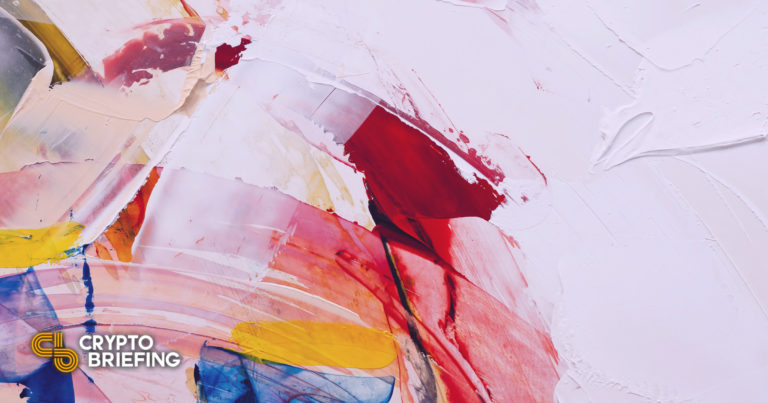Key Takeaways
- NFTs, along with the rest of the digital asset market, have had a rough 2022.
- Art markets in the NFT space have weathered the downturn relatively well, all things considered.
- This is in part because, unlike other use cases, art makes few promises to be more than what it is.
Share this article
It’s no secret that 2022 has been hard on every aspect of the industry, and NFTs have not been spared. DappRadar data shows that daily trading is still active, of course, but even high-profile projects (with a few exceptions) are having trouble cracking more than three figures in the number of daily active traders.
Diamonds in the Rough
In such bleak conditions, it can be nerve-wracking to place your bets on the future, especially on projects that are still in the making. Any project can claim that the product it eventually brings to market will be revolutionary, and by now, it’s a standard play to engineer a whitelisted NFT sale with the implication always the same—this project will be huge, so you’d do well to get in now.
Those anticipated returns on such projects always hinge around the concept of forthcoming “utility,” an industry buzzword that indicates that an NFT will have some kind of usefulness in the future. We heard a lot about NFT utility in the 2021 bull run, but the actual usefulness of NFTs has thus far fallen very short of what we were promised last year.
In an August press conference, Ethereum creator Vitalik Buterin said as much about the entire crypto space in general, eschewing the standard appeal to the word “utility” in favor of its plainer and arguably more honest relative: “usefulness.”
“I think the next 10 years is when crypto has to transform into something that is not based on promises of being useful in the future but is actually useful,” he said at the time, “because a lot of applications are promising in theory, but they’re just completely not viable because of scaling issues today.”
If Vitalik is right, then many of the world-changing use cases that have been so enthusiastically pitched might still be some way off. That’s why I think it’s sensible now to focus efforts less on promises of grandeur and toward projects that already stand on their own two feet. In general, that means looking at art.
Oscar Wilde famously observed that “all art is quite useless,” and perhaps this accounts for why the NFT art market is holding up (relatively) decently compared to, say, Metaverse land tokens, which have seen massive declines in trading volume this year. With certain exceptions, most NFT art projects don’t pretend to be much more than what they are—they are works of art, and art is not intended to be “useful.” Therefore, it doesn’t have to be.
In fact, art is about the only sensible use case for NFTs thus far, partly because everything needed for a successful art market to function is already in place. OpenSea and its many lookalikes provide digital storefronts for collectors to shop with ease; the blockchain records the prices, market histories, chains of custody, and so on; and any number of digital tools available today allow artists to create with greater freedom than ever before. Other proposed use cases—digital IDs, deeds and titles, official issuance of licensure, and so on—will all require much more infrastructure in place to really take off, but the art market already has what it needs.
Above all else, though, NFT art often has something going for it that the most ambitious projects don’t—it is finished. A work of art doesn’t need to promise future utility because it’s already complete. There’s no need to speculate on anything it might be capable of doing in the future; it already does everything it’s going to do right now. In a space that’s filled with visions, dreams, and promises, maybe it’s not the worst idea to pick up a completed work or two now and then.
Disclosure: At the time of writing, the author of this piece owned ETH and some NFTs. The material contained in this piece is for informational purposes only and is not financial advice.


